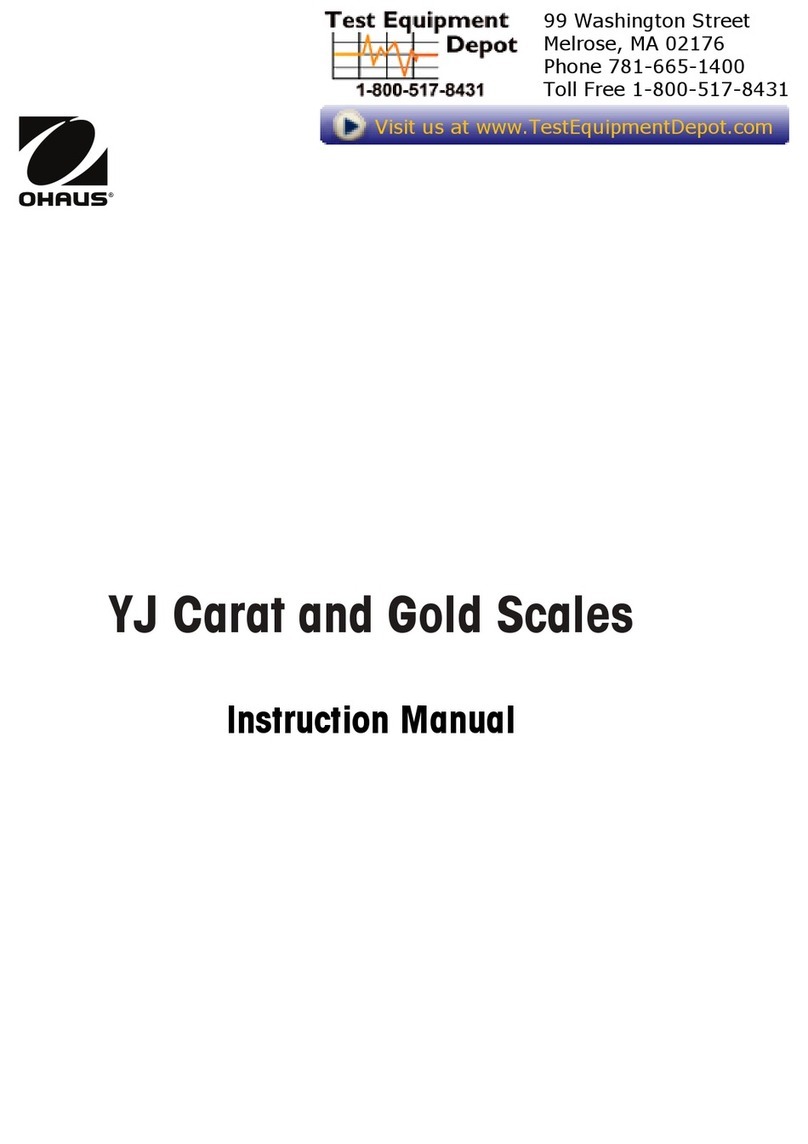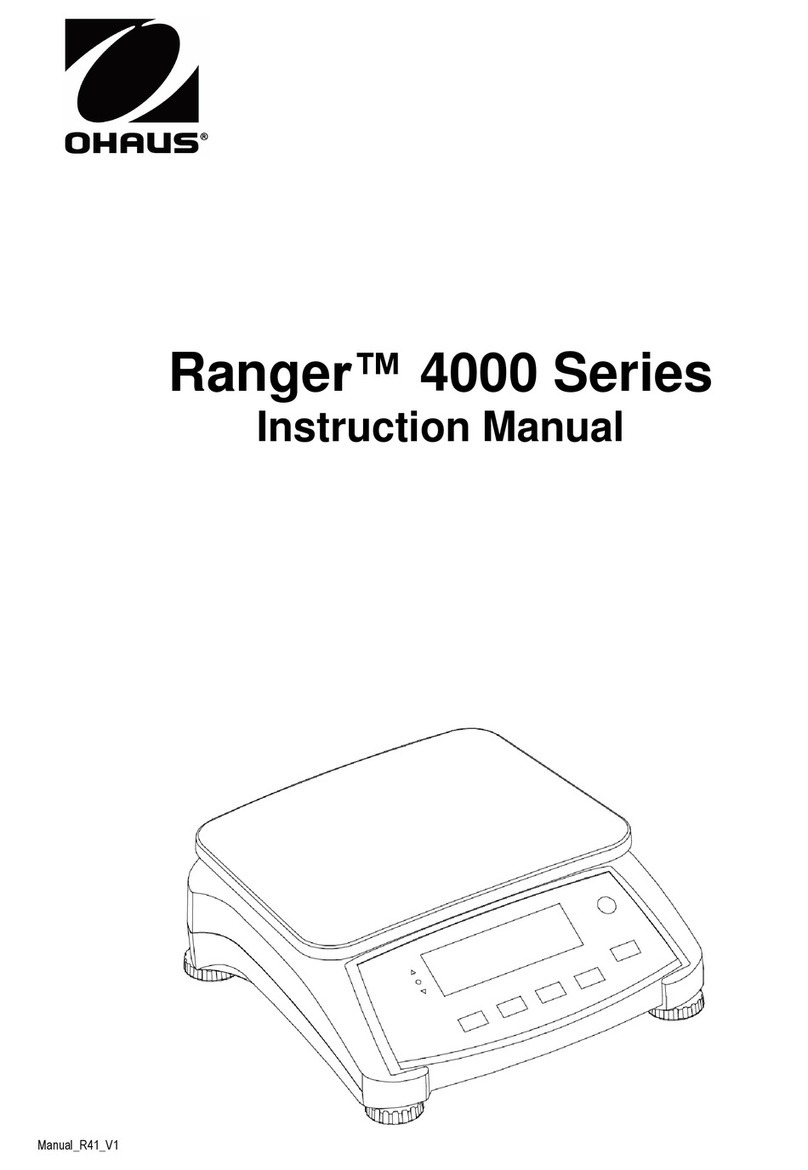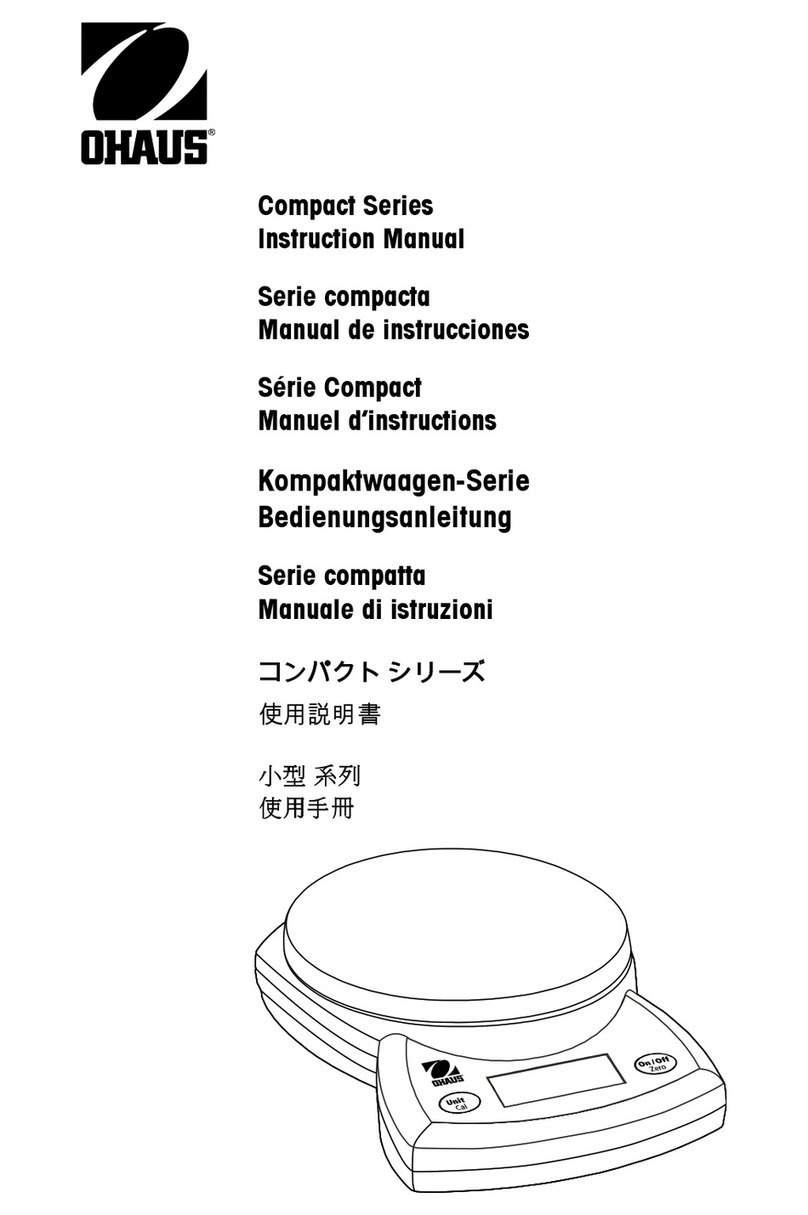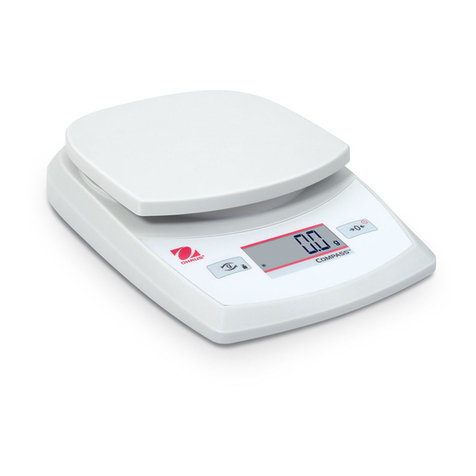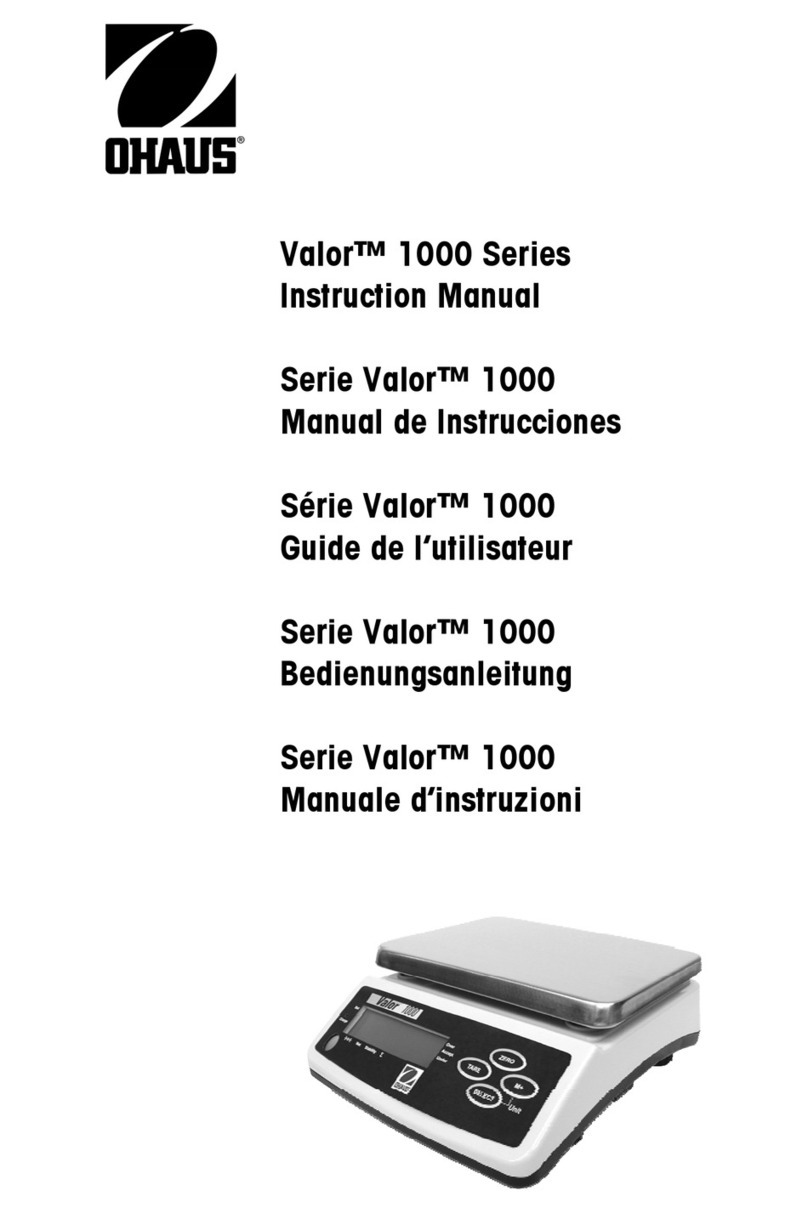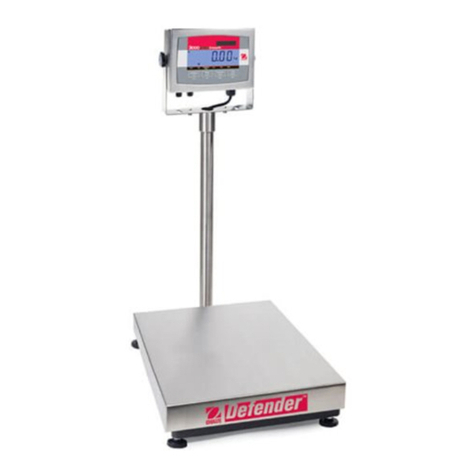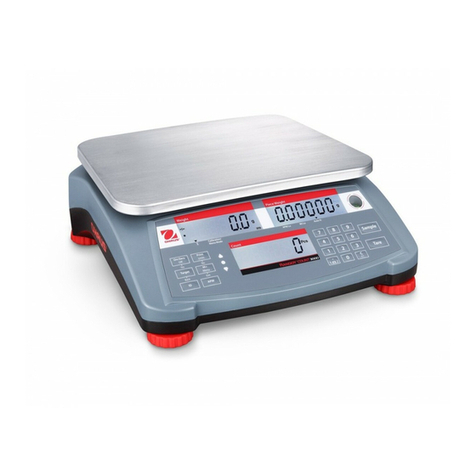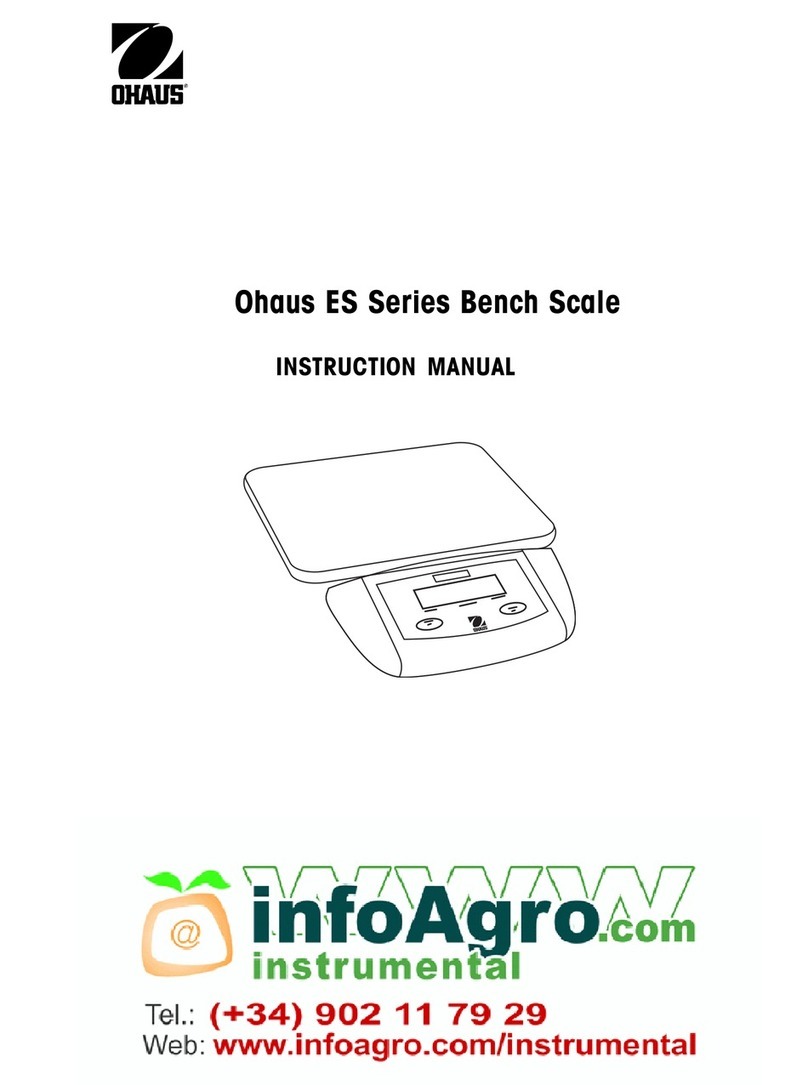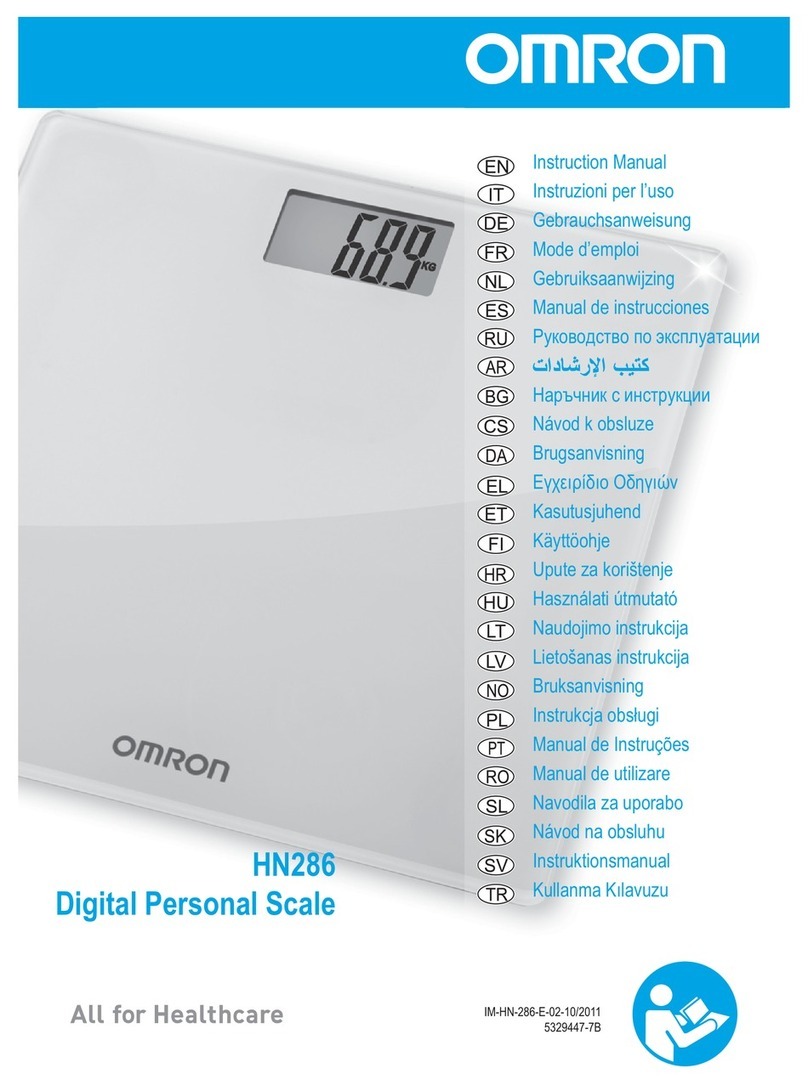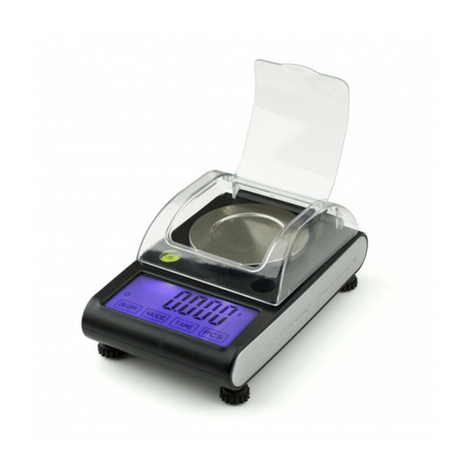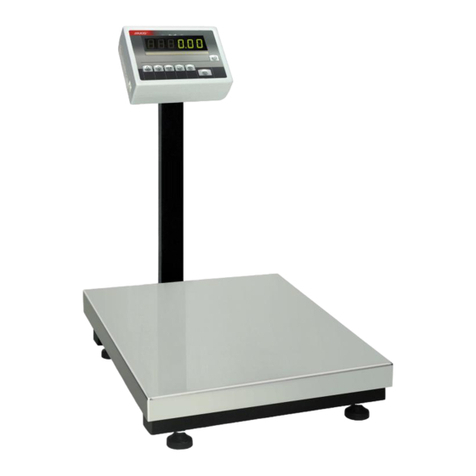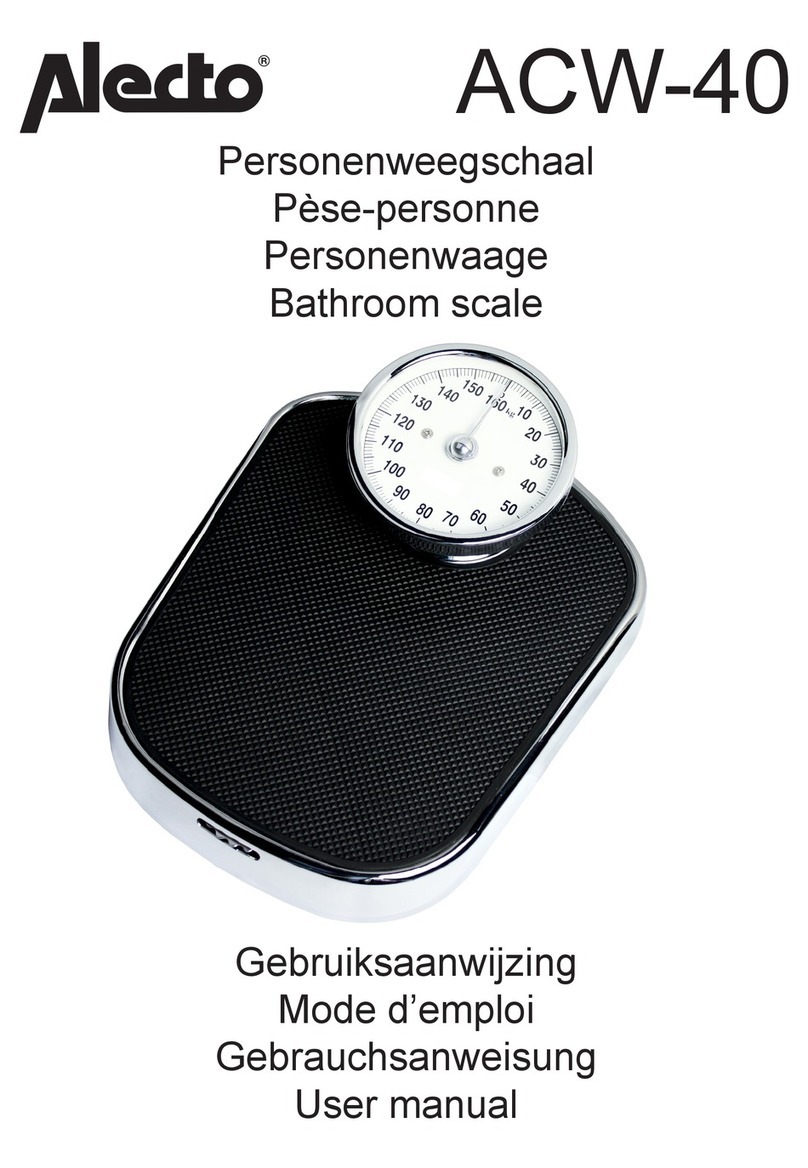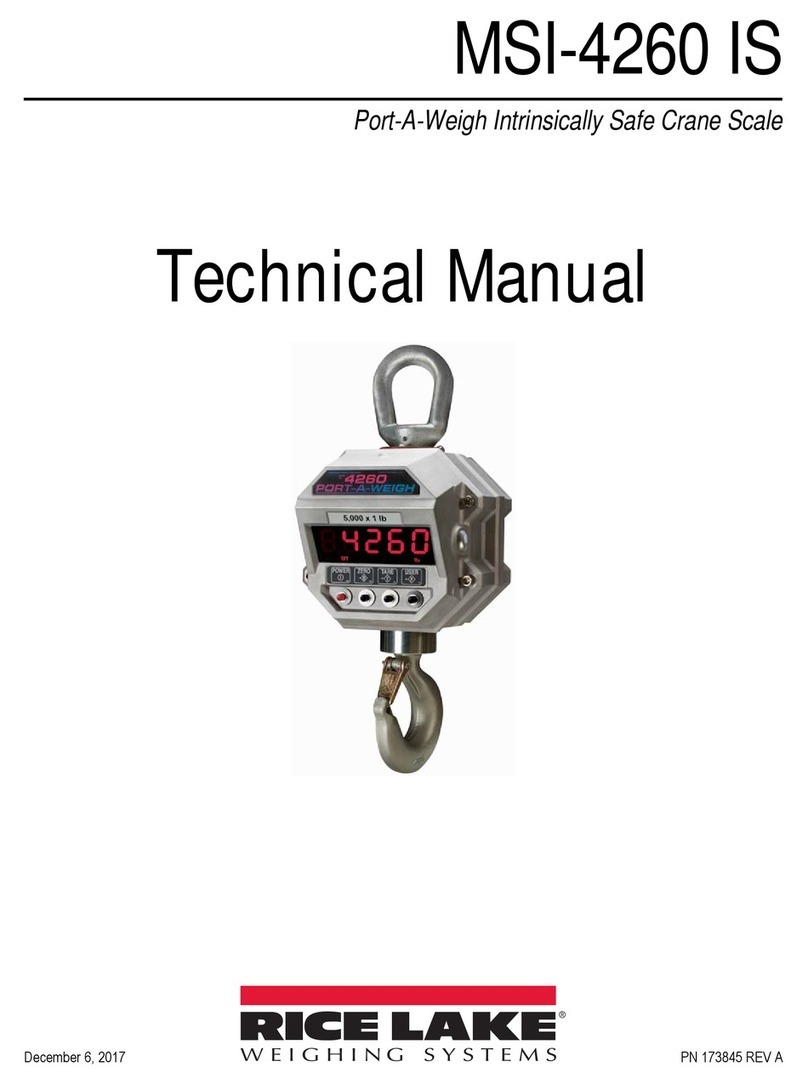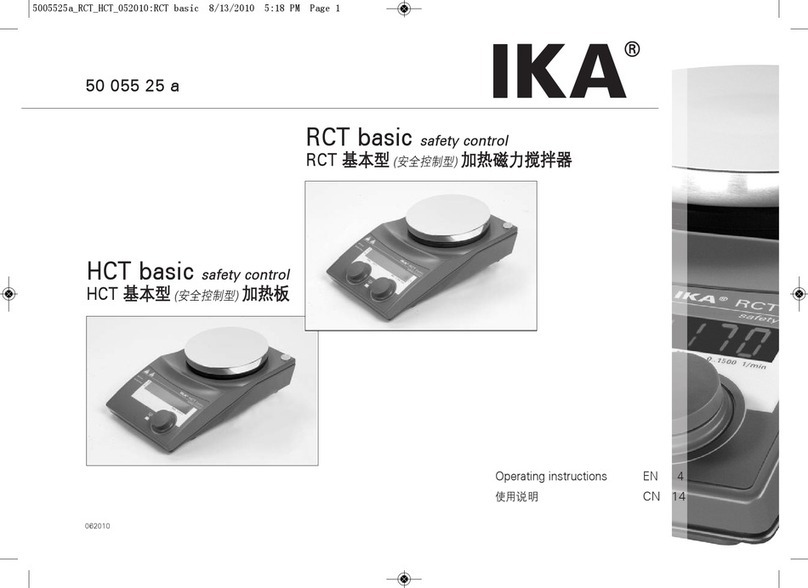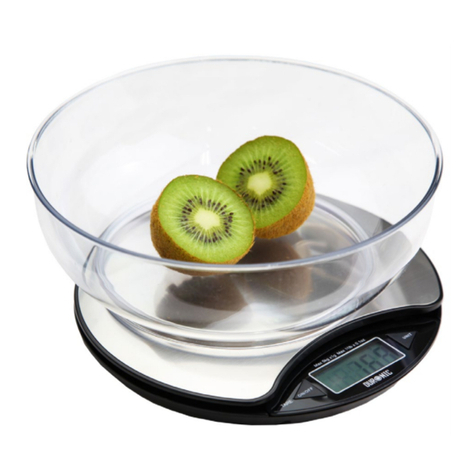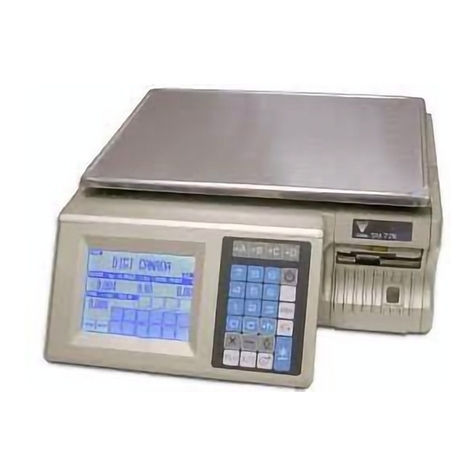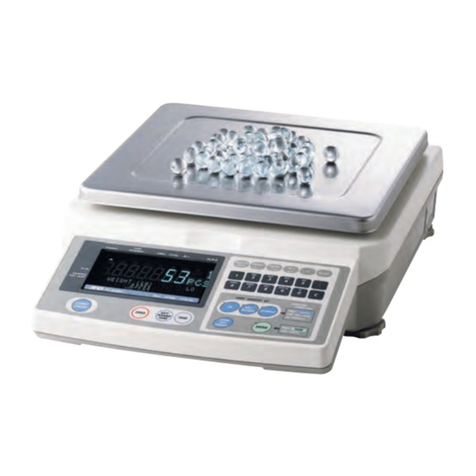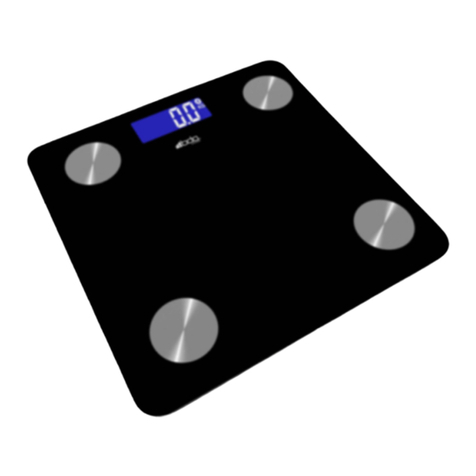
HOW TO USE THE LARGE POISE (500 GRAIN)
The principle of the large poise consists of an accurately adjusted weight which
moves parallel to the longitudinal axis of the beam and which is positioned at
weight values by means of a pawl engaging notches in the beam. The poise run
is from 0 to 500 grains. The equally-spaced notches divide this distance into 100
equal parts so that each subdivision is equivalent to 5 grains of weight.
To zero the large poise, move it to the position where the pawl, located on the
right side of the poise, engages the first notch on the right end of the poise travel.
The poise indicator will line up with the zero graduation.
To increase weight values, move the poise to the left and line up the indicator
with the desired graduation. Always make sure the pawl is seated in the
notch.
To increase weight values, move the poise to the left and line it up the with the
desired graduation. Always make sure the pawl is seated in the notch.
Illustrated is a setting of 3.7 grains.
Do not attempt to set the poise at any position except firmly seated in a notch.
HOW TO ZERO BALANCE THE SCALE
Place both poises at zero. If the scale has been placed on a reasonably level
Illustrated is a setting of 160 grains.
Do not attempt to set the large poise at any position except firmly seated in a
notch. Always use the small poise for weight values between the 5 grain
increments of the large poise.
HOW TO USE THE SMALL POISE (5 GRAIN)
The principle of the small poise is the same as for the large poise. This poise
run is from 0 to 5 grains. The equally spaced notches divide this distance into 50
equal parts so that each subdivision is equivalent to 1/10th (.1) grain of weight.
To zero the small poise, move it to the position where the pawl, which is the top
edge of the rectangular slot through the poise, engages the notch directly above
the zero graduation. The long, vertical edge of the poise is the indicator and will
line up with the zero graduation.
surface, the beam pointer will come to rest fairly close to the zero graduation on
the dial plate. Raise or lower the left end of the base by means of the leveling foot
to line them up.
The scale should be zero balanced before use and checked periodically during
use for maximum accuracy and protection against error.
MAGNETIC DAMPING
Your ʺ5-0-2ʺReloading Scale is equipped with magnetic damping which causes
the beam to come to rest quickly without affecting sensitivity or accuracy. It
operates on the principle of a permanent magnetic field resisting the motion of a
non-magnetic, copper damper vane attached to the beam.
The damping magnets are positioned inside the base on both sides of the slot
that the damper vane travels in.
The only maintenance required is to keep this slot free of magnetic particles which
could interfere with free movement of the damper vane.
The magnetic damping is effective at all loads and will speed up weighing.
HOW TO WEIGH
To weigh an unknown, such as the throw of charge from a powder measure,
place it in the scale pan. Move the large poise to the first notch which causes the
beam pointer to drop below zero and then move it back one notch. Then move
the small poise to the notch which brings the beam pointer closest to zero. The
weight of the unknown is the sum of the two poise readings.
Illustrated is a total weight of 163.7 grains.
The scale can also be used to weigh out predetermined powder charges, either
alone or in combination with a powder measure set to throw a light charge.
In either case the desired final weight of the charge is preset on the poises. This
will cause the beam pointer to fall below the zero graduation. Add powder to the
pan until the beam balances.
When making repeated weighings in this manner, avoid weighing errors by
making sure that the poises remain in their correct positions and are not
accidentally moved.
HOW TO CARE FOR YOUR SCALE
Keep the scale clean at all times and be particularly careful to prevent the
accumulation of dirt on the pivots and bearings. Never apply oil or any lubricant
to the pivots or bearings; this will lower the accuracy of the scale.
LOADING DATA
Use only laboratory tested reloading data.
OBSERVE ALL WARNINGS ABOUT THE USE OF MAXIMUM LISTED LOADS.
PRIMERS AND POWDER
Store primers and powder beyond the reach of children and away from
heat, dampness, open flames and electrical equipment.
DO NOT use primers of unknown identity. To destroy unwanted
primers, soak in oil for a few days and then bury.
Keep primers in original factory container until ready to use. Store
unused primers in the same factory packaging for safety and to
preserve their identity.
DO NOT store primers in bulk. The blast of just a few hundred primers
is sufficient to cause serious injury to anyone nearby.
DO NOT force primers. Use care in handling primers.
DO NOT use any powder unless its identity is positively known.
Discard all mixed powders and those of uncertain or unknown identity.
If you use a powder measure, replace the lids on both the powder
hopper and powder can after the powder hopper has been filled.
Before charging cases, settle the powder in the powder hopper. Throw
and check the weight of at least ten charges. This will assure you that
the correct powder charge is being thrown.
After a reloading session ends, pour the remaining powder back in its
original factory container. This will preserve the identity and shelf life of
the powder.
DO NOT smoke while handling powder or primers.
SAFETY
Reloading is an enjoyable and rewarding hobby that is easily conducted with
safety. But carelessness or negligence can make reloading hazardous. This
product has been designed from beginning with the user’s safety in mind.
As with any reloading operation, some safety rules must be followed. By
observing these few rules, the chance of a hazardous occurrence causing
damage or injury becomes extremely remote.
GENERAL
Use the reloading equipment as the manufacturer recommends.
Study the instructions carefully and become thoroughly familiar with the
operation of the product. Don’t take short cuts.
Observe ʺgood housekeepingʺin the reloading area. Keep tools and
companents neat, clean and orderly. Promptly and completely clean up
primer and powder spills.
Reload only when you can give your undivided attention. Do not reload
when fatigued or ill. Develop a reloading routine to avoid mistakes.
Avoid haste - load at a leisurely pace.
Always wear adequate eye protection. You assume unnecessary risk
when reloading without wearing safety glasses.
Don’t take short cuts.
RECORD KEEPING
Keep complete records of reloads. Apply a descriptive label to each
box.
Since OHAUS has no control over the choice of components, the manner in which
they are assembled, the use of this product, or the guns in which the resulting
ammunition may be used, no responsibility, either expressed or implied, is
assumed for the use of ammunition reloaded with this product.
IMPORTANT
Please read these instructions very carefully in order to obtain optimum results.
Save these instructions for future reference.
Ohaus Corporation
7 Campus Drive, Suite 310
Parsippany, NJ 07054 USA
For customer service call Toll Free
1-800-672-7722
